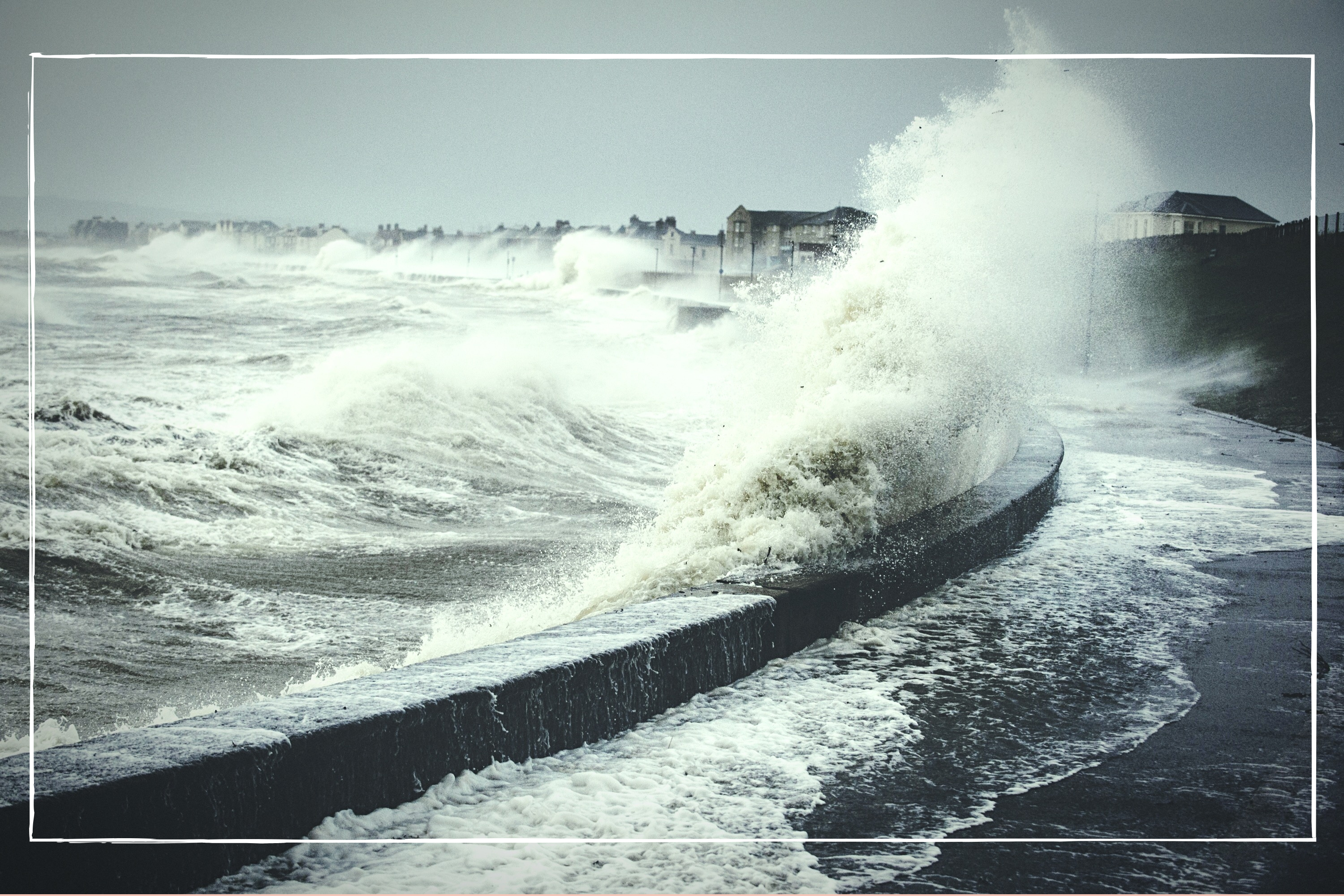How do storms get their names and why are they named after people?


Arwen, Eunice and Franklin are some of 2022's most severe storms to have hit the UK. But ever wondered how storms get their names?
It certainly seems to be a tumuluous time for UK weather of late. With the start of 2022 having welcomed a number of mighty storms. Strong winds, heavy rain and bouts of lightening have all taken their toll with severe damage to property seen. And a fair few garden casualties have had neighbours questioning which side of the fence is mine and who is responsible for the repairs.
Weather and destruction aside though, many of us are also curious about how storms get their names and how they're decided in the first place. Over the years we've seen a mix of popular baby names and old fashioned baby names for storm names and there's often a sweet meaning behind these storm monikers.
How do storms get their names?
Storms get their names decided and declared by the Met Office - the UK's national weather agency. According to the Met, storms are named to help alert the public through the media that extreme weather is on it's way, so they can best prepare themselves.
"The naming of storms using a single authoritative system should aid the communication of approaching severe weather through media partners and other government agencies," says a statement on the Met Office website.
"In this way the public will be better placed to keep themselves, their property and businesses safe."
The most recent storm name is Storm Franklin, which was announced by the Met Office on February 20, 2022. It follows in the wake of Storm Eunice which brought about massive disruption and debris during mid Feburary.
GoodtoKnow Newsletter
Parenting advice, hot topics, best buys and family finance tips delivered straight to your inbox.
Storms only receive an official name when they are likely to cause a great deal of impact. Determined by the National Severe Weather Warnings service, storms will often be named if they meet the Amber or Red warning storm catergory criteria.
"Other weather types will also be considered, specifically rain if its impact could lead to flooding as advised by the Environment Agency, SEPA and Natural Resources Wales flood warnings," adds the Met Office. "Therefore 'storm systems' could be named on the basis of impacts from the wind but also include the impacts of rain and snow."
Why are storms named after people?
According to the Met Office, storms are named to help "raise awareness of their impacts and make it easier to follow their progress in the media, on social media and online." Once a storm has been deemed severe enough to receive a name, the Met Office, Met Éireann and Royal Netherlands Meteorological Institute will announce it's moniker.
The tradition of storms getting names dates back to the 16th Century, when cyclones in the Caribbean were named after saints. Then in 1953, the US National Hurricane Centre in Miami, Florida officially began naming hurricanes too.
Storm naming in the UK became a more inclusive event from 2015. The Met Office launched their 'Name our Storms' initiative that year, and since then the public can suggest possible names for future storms. Each year tens of thousands of names are submitted for the next Storm year which runs from early September to late August.
Storm names submitted could be classic or unusual baby names and often have sweet reasons behind the nominations. For example, Storm Dudley - which arrived on February 14 - was chosen as it will become the surname for a couple getting married this year.
https://youtu.be/TyChf01T8xs
Other significant names on the list are Logan. This one was nominated by a number of parents and grandparents. With one Logan known for running "through the house like a tornado" and another being "as quick as lightning" when playing as a goalkeeper.
We also loved the nomination for Ruby. One parent suggested it for her daughter who "leaves a trail of destruction" when she enters the house. Whilst a pet owner also suggested Ruby after their cat who "comes in and acts like a storm".
The 2021-2022 list is now complete. But if you want to get involved in future, be sure to look for updates around June from the Met Office. This is when the naming process opens. You'll be asked to send in your suggestions by email to nameourstorms@metoffice.gov.uk.
Are storms named in alphabetical order?
Yes, storm names are announced and occur in alphabetical order. Each September, the Met Office releases an A-Z list of storm names that will be used during the upcoming storm cycle.
In addition to being alphabetical, storm names alternate between male and female too. For example, in the storm cycle 2021-22, we've had Arwen (female), Barra (male), Corrie (female), Dudley (male) and Eunice (female).
Storm names: 2021-2022
- Arwen (named: 25 November 2021)
- Barra (named: 5 December 2021)
- Corrie (named: 29 January)
- Dudley (named: 14 February)
- Eunice (named: 14 February)
- Franklin (named: 20 February)
- Gladys
- Herman
- Imani
- Jack
- Kim
- Logan
- Méabh
- Nasim
- Olwen
- Pól
- Ruby
- Seán
- Tineke
- Vergil
- Willemien
Why are there no storms for Q, U, X, Y and Z?
Interestingly, storms will never get their names from the letters Q,U, X, Y, Z. The Met Office have confirmed this and explained that it is to do with consistency, following the same pattern used by the US when naming hurricanes.
"To ensure we are in line with the US National Hurricane Centre naming conventions, we are not going to include names which begin with the letters Q, U, X, Y and Z," says the Met Office. "This will maintain consistency for official storm naming in the North Atlantic."
Dan Pydynowski, a senior meteorologist at AccuWeather gives a reason for these letter exceptions:
"The letters Q, U, X, Y and Z are just not common letters that names begin with," he said. So it's bad news for any Ursulas or Quinns out there hoping for a storm named after them.
Whilst we in the Atlantic have these letter exceptions, the same does not necessarily apply to storms that hit the East Pacific.
"The East Pacific uses X, Y and Z, while the Atlantic does not," Pydynowski adds. "The East Pacific averages more named storms per year; thus, more names are needed in an average year and there is a better chance [of reaching] the end of the list."
Elsewhere, we've reported on the latest storm forecast for Storm Agnes and Storm Ciaran too.
Video of the Week:

Emily Stedman is the former Features Editor for GoodTo covering all things TV, entertainment, royal, lifestyle, health and wellbeing. Boasting an encyclopaedic knowledge on all things TV, celebrity and royals, career highlights include working at HELLO! Magazine and as a royal researcher to Diana biographer Andrew Morton on his book Meghan: A Hollywood Princess. In her spare time, Emily can be found eating her way around London, swimming at her local Lido or curled up on the sofa binging the next best Netflix show.